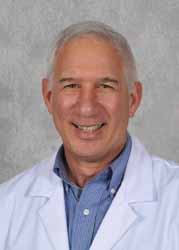Category Archives: Health & Wellness
Birth Control Methods – Pros and Cons
By Julie Henne-Reese, Certified Registered Nurse Practitioner
There are many birth control methods to choose from, but they differ in ease of use, cost and effectiveness. Some are available over the counter while others require a prescription or a medical procedure. MPCP offers several products, including birth control pills, implants (Implanon and Nexaplanon) and IUDs (Mirena and Skyla).
The chart below lists some of the most effective birth control methods, with pros and cons for their use. The descriptions are only an overview and do not contain complete information. Talk to your medical provider about these and other methods to determine what works best for you.
Keep in mind, most birth control products don’t prevent the spread of sexually transmitted diseases (STDs). Your medical provider can advise you on how to stay safe.
Which Method is Right for You?
| Method | Effectiveness | Features | Pros | Cons |
|---|---|---|---|---|
| Birth Control Implant | 99% | Matchstick-sized rod that doctor places under the skin of woman's upper arm. Releases hormone to prevent pregnancy | Lasts 3-5 years. You don’t have to think about it | More expensive than other methods |
| IUD (Intrauterine Device) | 99% | Placed inside the uterus to prevent conception | Lasts 5-10 years. Low maintenance | More expensive, may cause irregular/heavy periods |
| Vasectomy | 99% | For men. Doctor surgically closes the tubes that carry sperm from the testes | Does not affect ejaculation | May not be reversible, more expensive |
| Tubal Ligation | 99% | Surgeon closes off the fallopian tubes, preventing eggs from leaving the ovaries | Very effective | May not be reversible, more expensive |
| Tubal Implants | 99% | Doctor puts a small metal or silicone implant inside each fallopian tube, blocking them and preventing ovulation test | Very effective, doesn’t require surgery | Not reversible, more expensive |
| Birth Control Shot | 97% | Hormonal shot protects against pregnancy for three months. It is injected four times a year | Since you don’t have to think about it, is usually better than birth control pills | More expensive. May cause spotting and other side effects |
| Birth Control Pill | 92%-95% | Uses female hormones estrogen or progestin to prevent ovulation | Very effective if used right. May cause more regular, lighter periods, or no periods | May cause breast tenderness, spotting, blood clots and raised blood pressure |
| Vaginal Ring | 92%-95% | Soft plastic ring goes inside the vagina. It releases the same hormones as the pill. A woman replaces it herself once a month | Works as well as the pill. May cause lighter, more regular periods | May cause vaginal irritation or other side effects similar to the pill |
| Male Condom | 84-89% | Latex condom blocks sperm from entering the woman's body | Inexpensive. One of the few birth control methods to prevent sexually transmitted diseases | Not reusable. Effective only if used correctly every time |
| Diaphragm | 84-89% | Rubber dome that a woman places over her cervix before sex. It is used with spermicide | Inexpensive | Doctor must initially fit it to ensure proper function |
| Cervical Cap | 84-89% | Similar to a diaphragm but smaller. Slips into place over the cervix. Used with spermicide | Inexpensive, can stay in place for 48 hours | Doctor must initially fit it to ensure proper function |
| Birth Control Sponge | 84-89% | Made of foam and contains spermicide. A woman can place it against her cervix up to 24 hours before sex | Effective immediately. Works about as well as the cervical cap | Can be hard to put in |
Julie Henne-Reese, Certified Registered Nurse Practitioner, is board certified by the American Nurses Credentialing Center in Family Practice. She sees patients in MPCP’s Queenstown office.
The Opioid Epidemic
By John Billon, M.D.
Commonly used narcotics, called opioids, have been in the news a lot lately. This can include heroin, and mediations that are commonly prescribed to treat pain, such as oxycodone and morphine. Unfortunately, opioid abuse has spread in recent years to infect communities across Maryland, putting neighbors – and even family members ─ at risk.
Who is abusing opioids?
The numbers of people abusing these medications and drugs are staggering and continue to increase. Almost a million people now use heroin. In 2016, there were on the order of 42,249 opioid related deaths. This is five times higher than 1999. The rate of infants born withdrawing from opiates has also increased five times over the same time period.
These numbers are hard to ignore. The increases in families affected have left people searching for information on the epidemic and how they can identify when their loved one has a problem.
Is abuse happening here?
Part of the difficulty of fighting the opioid epidemic is the personal myth that it cannot happen to you or a loved one. Recently, Anne Arundel County has an initiative, Not My Child, that spreads awareness and helps remind people that opioids can destroy lives and that the disease does not discriminate. The video, Not My Child, is worth a watch. Not My Child also has an excellent list of local resources to support those affected.
Signs to look for
Here are some signs to look out for if you suspect that a loved one is abusing opioids. Signs may include: emotional withdrawal, getting into trouble, doing worse at work or school, pupils that are small or bigger than normal, and new onset of seizures.
What you can do?
If you identify that your loved one is abusing opioids, they may claim to be just starting. Make sure to start getting them some help because sometimes the problem is further along than claimed. Contact your physician or consider calling the helpline from the Not My Child Program (410-768-5522) if you have questions about what to do or where to go for help.
Learn more
Symptoms of Opioid Addiction
General Information on Opioid Abuse
Dr. John Billion is certified by the American Board of Family Practice and sees patients in MPCP’s Arnold office.
Doctors Lamphier and Walsh on QACTV
Cholesterol 101
By Victor M. Plavner, M.D.
Have you been told you need your cholesterol checked? Or do you know you already have high cholesterol? What does that really mean and what numbers are important to know when we’re talking about cholesterol?
It’s easy to get confused when you hear people talk about good cholesterol vs. bad cholesterol, and what effect diet vs. heredity plays ─ even what numbers you should be concerned with when you have your cholesterol checked. Each individual should talk with his or her primary care doctor about their blood cholesterol levels and risks, but here is some good general information:
- Cholesterol is a naturally-occurring, waxy substance that’s made naturally in the liver and can be found throughout the body. Cholesterol is also found in some foods we eat. While we need cholesterol for the cells and organs of our body to work effectively, too much cholesterol in our system increases the risk of heart disease and stroke.
- HDL (High Density Lipoprotein) is known as “good” cholesterol because it helps sweep the bad cholesterol out of your blood. LDL (Low Density Lipoprotein) is considered “bad” because it causes the build-up of cholesterol on the walls of arteries, increasing the chances of cardiovascular disease.
- Your cholesterol can be checked through a simple blood test. In general, the number you want is for your total (HDL & LDL) cholesterol to stay below is 200. Broken down further, your optimal LDL level should be below 130 for the average patient, below 100 for the diabetic patient and around 70 for the patient with coronary heart disease. HDL levels above 60 are considered helpful to reducing heart disease risk. So, a lower total and LDL cholesterol is good, and a higher HDL number is better.
High cholesterol is often hereditary and increases with age. However, there are several risk factors you can control: diet, excess weight, sedentary lifestyle, smoking, and diabetes. Some researchers believe that dietary changes alone can lower LDL (bad) cholesterol by as much as 20-30%.
So, don’t panic if you have high cholesterol. Work with your doctor to come up with a dietary and exercise plan and, if needed, there are several medications that can help. And start early to keep your children active and eating healthy so they’ll have to worry less about high cholesterol later.
Dr. Plavner is an MPCP partner and is certified by the American Board of Family Medicine. He received his medical degree from the University of Louvain in Brussels, Belgium, and the George Washington University Medical Center. He completed his residency program in Family Practice at Franklin Square Hospital Center.






